Remembering Valda Irene Phillips (1921-2023)
My paternal grandma passed away a few days ago and since then I’ve been thinking about her life and my memories of her.
Valda Winter was the middle of five children born to Otto and Irene Winter, and she grew up in the suburbs of Adelaide. Her father was a Finnish seaman, who ended up in South Australia, and her mum was of English descent.
She was 101, and was very with it and independant until about the age 97 or so. I mean, she’s this tiny (and by tiny, I mean less than 5 foot something) lady, living in her own unit at that age! Remarkable eh!
But sadly there’s a lot that I didn’t (and probably won’t) know about my grandma. I did give her a copy of the “The Book of Myself: A Do-it-Yourself Autobiography in 201 Questions” which is a book that asks questions, and has plenty of room for answers to be written in. She said she would fill in for me, but sadly when we found it on her shelf, it was never written in. So maybe in retrospect, interviewing her directly would possibly have been a better option, as so many memories and stories have now been lost with her passing. And she was the last of that generation, and my last grandparent.
Unfortunately this side of the family weren’t really keepers of much at all, other than photos from more recent eras. So while grandma would have seen so many changes in life, and world events throughout her 101 years … we don’t have any written record of her thoughts on any of it.
Here’s just a few key events that happened during her lifetime:
1929 The Depression hit Australia
1932 Opening of the Sydney Harbour Bridge
1940 Pencillin was developed by Howard Florey and a team of scientists
1942 Japan bombs Darwin
1949 Australian citizenship introduced
1950 Korean War
1954 Queen Elizabeth II visits Australia
1956 Polio vaccine ends epidemic in Australia
1956 Television is launched in Australia
1958 Australia’s first skyscraper built
1966 Decimal currency introduced to NSW, Victoria, Queensland, South Australia and the ACT
1969 Man walks on the moon for the first time
1971 Daylight Saving introduced
1973 Sydney Opera House opens
1974 Cyclone Tracy flattens Darwin
1979 Australian women win the right to maternity leave
1982 Commonwealth Games held in Brisbane
1983 Ash Wednesday devastate large parts of South Australia and Victoria
the list could go on and on!!
I remember lots of wider-family get-togethers when I was younger. I remember their house at Cudlee Creek, and the sheds that got burnt in Ash Wednesday. I remember the house she and grandpa moved to when they moved to the suburbs, and their love of caravaning with friends particularly for golf trips. I remember that she had a penfriend in England for 60 or so years. I remember her passion for her Finnish heritage, as well as anything to do with the Royal family, particularly Queen Elizabeth II. Her display cabinet with royal knick-knacks was quite the collection. I remember staying with them for a week when I did work experience, so I could catch the bus into the city and back each day. I remember that back in her youth she was a dressmaker for Madam Jeanne’s bridal shop, and right thoughout the decades, she caught up the ‘the girls’ from there once a year, which was always a highlight for her. I remember that Christmas time was a big thing for her, and her house was filled with cards, so I have no doubt that she was a big card sender too.
And I remember the afternoons I went to her place to scan old photos.
Anyway below are a selection of photos from her life …
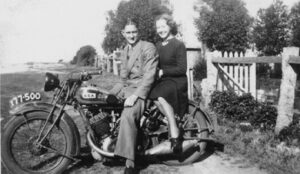
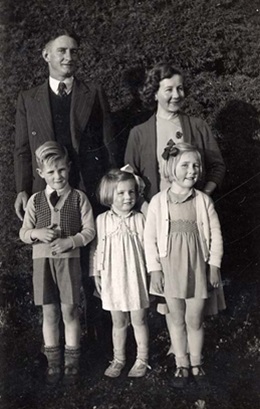
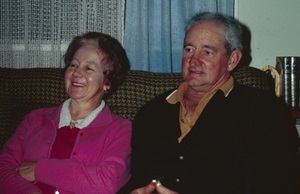
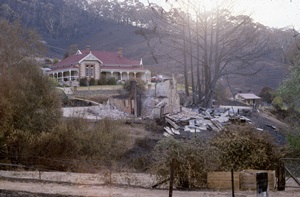
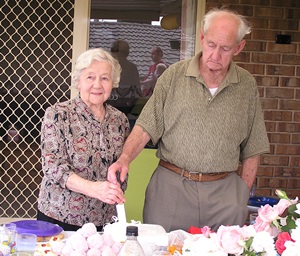
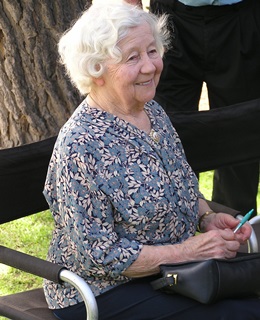
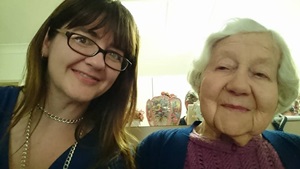
Rest in peace grandma, and I hope you’re enjoying catching up with everyone again.
Remembering Tarakan, 1 June 1945
Anzac Day, a day of remembrance of those who fought and died for our country. Whether they lived or died, nothing was ever the same again for those who went, as well as those at home.
For today’s Anzac Day post, I looked at those from my own family who were involved in war – there have been many over the years in the various wars, but this times I’ve chosen to write about Harold Roy Winter, my grandma’s brother who was involved in World War 2.
I’ll start off by saying that the military knows him as “Roy Harold Winter”, rather than “Harold Roy Winter”, simply (or so the story goes) as there was another person already signed up with that name so he switched it, so for this purpose I’ll go with the military version.
Born in Victoria, he grew up in Adelaide, and signed up as a young 25 year old ready to fight for his country. He was assigned to the 2/48th Battalion Australian Infantry Battalion, and got to see to world … and war!
Reading through the letters he wrote to family while he was in the army, he describes going overseas as a great adventure, as well as describing the monotony of army life. He also writes about the strength of the hospital staff …
“The efficiency, determination and sacrifices to their job are a magnificent credit to them, and only we who have experienced it can give a true value to their worth. In many cases, patients were being attended by orderlies who were just as ill, or in some cases even worse. Such is to the spirit of the A.I.F. and it will keep all of us going till we die or win through.”
But it was a sketch that he drew of a battle scene that I wanted to highlight today.
Captioned: Attack on Hill 102, Tarakan, June 1st 1945, I wanted to know more about this, so I headed to the Australian War Memorial’s website, and looked up their Battalion War Diaries which you can find online now. Found the one for the 2/48th Battalion, scrolled through to find the page relating to 1 June 1945 … and bingo!
The entry for 1 June 1945, says the following …Date: 1 Jun to 30 Jun 45
Place: Tarakan
Date: 1 Jun 45
Hour:
Summary of Events and Information:
Following a successful air strike by 18 Liberators each carrying 9 x 500 lb bombs and 24 Lightnings with Napalm and staffing, B Coy attacked the 102 feature. 12 Pl moved forward and killed 6 enemy in their positions. Moving back to their positions. These were quickly engaged by the flame throwers and the enemy party destroyed. 12 Pl now over-ran the 102 feature. 10 Pl passed through and exploited for approx 200 yards West of 102 without making contact.On other coy fronts, patrols were active throughout day. 16 Pl engaged an enemy standing patrol of 6 astride creek jun at 436683 but results could not be observed. The Pnr Offr (Lt SIMPER), 4 Pnrs and 9 ORs from A Coy engaged a patrol of 12 Jays at 444684 killing two and wounding one.
Changed to Bn’s dispositions: B Coy on 102 Feature.
Enemy cas for 24 hrs: 12 killed, 1 probably killed.
Own cas for 24 hrs: KIA -, WIA 1 offr 1 ORpage 1, from the Unit 2/48 AIB,War Diary, 1-30 June 1945 [AWM, ref: RCDIG1023631]
[click for a larger image]
Roy was there. He saw this happen. He saw the action, and he drew it. And this precious WW2 momento is still in the family.
After five years of travelling to various parts of the world fighting as a proud Australian, and surviving several gunshot wounds and other illnesses, Roy returned home to his wife, Vera in South Australia and settled into life after war. No doubt his injuries took their toll, as he died relatively young, at age 58, and is buried at Cheltenham Cemetery in South Australia.
Vera and Roy never had any children, so they don’t have any direct relatives, and Roy died before I was born so I never knew my great uncle, but despite that I wanted pay tribute to him.
Lest We Forget
William Cosgrove, Convict
My 3x great grandpa William Cosgrove is one of those people that you have some info on him from a certain date, but nothing beforehand, so he’s always been a mystery. I know he married in South Australia, had kids there and died there … but before that, nothing!!
However it was relatively recently that a cousin (thanks Judy), mentioned that she believed he was a convict.. So hence the research to prove or disprove this theory. I only have one direct convict on my line so far, so am eager to see if I have two (and it would be the first on my paternal line).
Let me start off by saying that there are several William Cosgrove’s who were convicts. The three I found were:
– William Cosgrove, transported on the ‘Mariner’ 1827
– William Cosgrove, transported on the ‘Royal Admiral’ 1830
– William Cosgrove, transported on the ‘Mangles’ 1840
What I know of ‘my’ William Cosgrove, age, occupation, and residence matches pretty closely with references to the 16 year old William Cosgrove, who was transported to New South Wales on the Royal Admiral in 1830.
As I don’t have a nice big long biography of William, or even an obituary giving all the amazing details throughout his life … it’s up to me to piece his life together from what I can find.
As a means to track it all, I have created a timeline and while I still have some gaps to fill, between the convict records, newspapers and gazettes it’s created a reasonable timeline already.
It is a work in progress, and there’s still much research to be done, and at this stage I don’t feel that I can yet say 100% for sure that William Cosgrove, convict is one of ‘my’ convicts. But at this stage I would call it “quite plausible”. Time will tell, and I’m still crossing my fingers.
***********
Timeline for William Cosgrove
- born 1814 – native place London on Certificate of Freedom
- born 1815 – native place London passenger list Royal Admiral
- 27 May 1830 – (aged 16) convicted at Old Bailey, London for stealing a plane, sentenced to 7 years transportation
- 18 Jun 1830 – transported to the prison hulk ‘Leviathan’ at Portsmouth
- 1 Jul 1830 – transported to New South Wales on ‘Royal Admiral’ .. age 16, Educ R, Relig P, Sing, native London, Plaisterer 3/2 yrs, stealing plane, where & when tried: Newgate, 29 May 1830, 7 yrs, height 5’1 ½”, ruddy, hair brown, eyes light hazel, Dept of Public Works, tattoos
- 8 Nov 1830 – Arrived New South Wales
- between 1 Jan and 31 Mar 1832 – Cosgrove William, plasterer and labourer assigned to Joseph Morley, Sydney
- 7 Apr 1834 – Cosgrove William, 20 absconded … plasterer, 5 feet 12, ruddy comp. brown hair, light hazel eyes, W outside right arm, cupid, woman, BD and sun on left, WC, heart, and wreath on upper right arm, from Joseph Morley, Sydney
- 16 Apr 1834 – (in the week before) RUNAWAYS APPREHENDED, … from Jos. Morley
- 19 Feb 1837 – (before this date) William Cosgrove 23, absconded (again) …London, plasterer, 5 feet 02 inch, ruddy comp , brown hair, light hazel eyes, outside of right arm, cupid woman B D and sun on left, W C heart and wreath upper right arm. from Joseph Morley
- 3 Aug 1837 – William Cosgrove – obtained Certificate of Freedom (SRNSW) … native place London, occupation Plasterer, year of birth 1814, height 5’4 ½”, ruddy, hair brown, eyes grey, & a bunch of tattoos
- 6 Apr 1842 – Newspaper report of a William Cosgrove employed by a plasterer – Sydney. Fined for smashing windows!
- June 1847 – unclaimed letter for William Cosgrove, plasterer (maybe at Parramatta)
- Oct 1847 – unclaimed letter for William Cosgrove, at Cassis (between Newcastle & Dubbo
(no identifier like “plasterer” this time – so may not be the same William Cosgrove) - 14 Dec 1853 – William Cosgrove plasterer, witness in a court case – reported in a Goulburn paper
- 10 Feb 1856 – married Anne McGrath Adelaide
- 1857-1872 had 7 children with Anne/Hannah McGrath in South Australia. First child Den(n)is, was a plasterer
- 27 Oct 1873 – a William Cosgrove, Plasterer of New Glenelg died of pneumonia, signature on death certificate is John Cosgrove, or New Glenelg (maybe a brother, or son who would have been 16). Age given as 57, suggesting a birth year 1815/16 – a 1 or 2 yr discrepancy from what is derived from trial/gazette records (this is not uncommon)
So there’s more work to do, but that’s what research is all about. Finding the pieces, and putting them together.
NFHM Blog Challenge Week 2: Family
Week 2 of the National Family History Month blog challenge, and this week I’m writing about “family”. Family for a family historian is such a broad topic. Do I write about an individual, or a family? A recent story or an old one? So. Many. Choices. And surprisingly it’s taken me a while to narrow it down.
Reunions are a place where ‘everyone’ is family, so it seems appropriate to write about big a big family reunion one of my family’s had … the Kelly Family Reunion.
31 December 1938 was the date chosen as it marked both 100 years since the arrival of William Kelly and his second wife Jane (nee Caley) in South Australia from the Isle of Man, as well as 50 years since the death of William.
The reunion was held at the Kelly family property, “Sulby Glen”, in the tiny country town of Cudlee Creek, South Australia, the drew 300 of the 400 descendants, with quite a number making the trip from interstate.
The article in the Advertiser, dated Monday 2 January 1939 writes …
Never has the old Sulby Glen property at Cudlee Creek seen so many visitors as passed through its beflagged entrance gates on Saturday morning, when almost 300 of the 400 descendants of William Kelly, from the Isle of Man gathered together to pay homage to his memory and to commemorate the centenary of his landing in Australia. The gathering was certainly unique as far as South Australia, is concerned, and one of the very few of its type ever held in the Commonwealth. The day was also the 50th anniversary of the day of his death. Sixty cars and a large motor bus brought the visitors, who came from New South Wales, Victoria, and Western Australia, and from many parts of South Australia … [read the full article here]
It really was a big do. Even making the South Australian newspapers. Being such a big event, I’ve often wondered if anyone had any movie footage of the day, alas to date I’ve never heard of any in existence (but you never know) … and that would certainly be amazing to see.
However one thing we do have is a group photo that was taken on that day. Click on the photo below for a larger image.
For more about the 1938 Kelly family reunion, see an earlier blog post that I’ve written about it here.
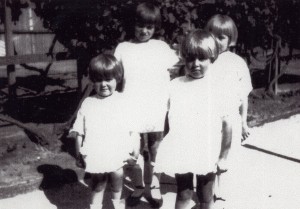
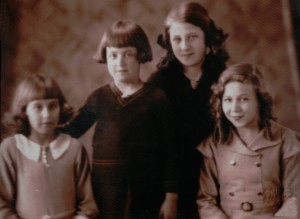
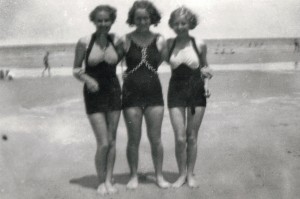
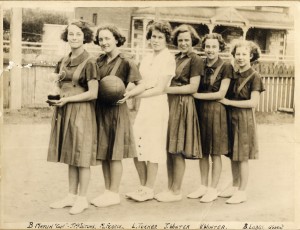
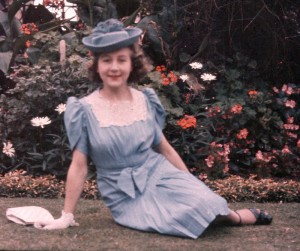
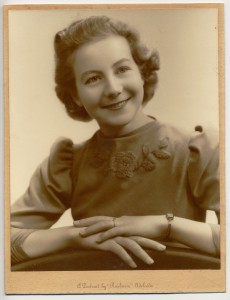
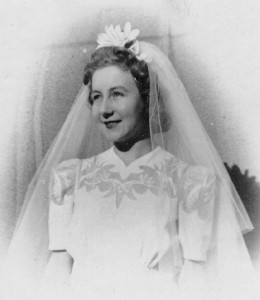
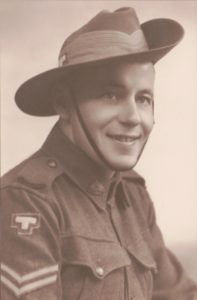
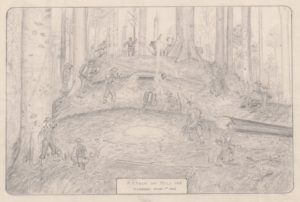
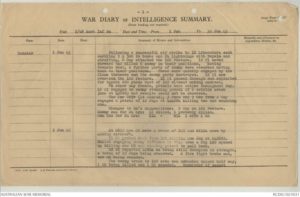
![Kelly Reunion group photo 1938[Click for a bigger view]](http://www.lonetester.com/wp-content/uploads/2015/06/Kelly-Reunion-group-photo-1938-cropped-300x137.jpg)



